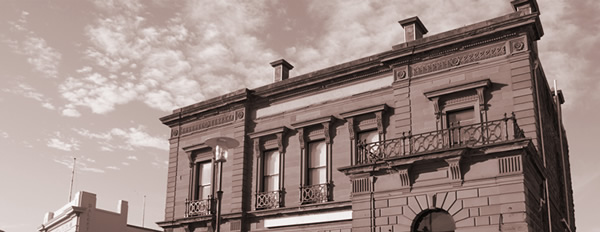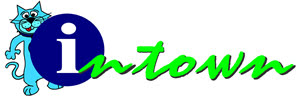The Wathaurong People were Geelong’s first residents and they originally called the bay “Jillong” and the surrounding land “Corayo”. The name Jillong has a meaning similar to “a place of the sea bird over the white cliffs”. Somehow we got it all mixed up and now call the land Geelong and the bay Corio. The Wathaurong People have left Geelong with a lasting legacy, many of the regions much loved place names and its streets are anglicized versions of Wathaurong words, including Moorabool, Gheringhap, Malop, Moolap, Corio, Geelong, Barwon, You Yangs, Bellarine, Colac, Beeac and Birregurra just to name a few.

The first recorded European to visit the Geelong region was Lt John Murray who sailed the Lady Nelson who on February 1st 1802 sent a party led by John Bowen to explore the region. Murray returned a few days later and claimed the entire region for Britain. But it is thought Murray might not have been the first European to sail into Corio Bay, others including the Dutch, Portuguese or Spanish might have been in the region centuries earlier. There is a bit of a legend that Charles La Trobe in 1871 found a set of Spanish keys in an excavation near where Limeburners Point stands a few hundred meters to the east of Eastern Beach. The keys (if they ever) no longer exist and details are a bit sketchy but there are some other stories in the region that help back it up including a story of a large mahogany ship wreck near Warrnambool, again to this day only a myth and never found.
Matthew Flinders, sailed into Corio Bay on the 27 April 1802. He charted the entire bay, including the Geelong area. In January 1803, Surveyor-General Charles Grimes aboard the Cumberland sailed into the bay and mapped the area. If not the first, one of the earliest reported deaths of an Aboriginal person by Europeans occurred in October of 1803 when the First Lieutenant JH Tuckey and his party camped in the area around North Shore. Escaped convict William Buckley escaped to the area also around this time. Explorers Hamilton and Hume were the next through the region in 1824.
The name Geelong was given to the town in 1837 by Governor Richard Burke and was surveyed in 1838. In its early days Geelong’s main trade was in wool. Some of the world’s best wool is grown in the Western District and region around Geelong and the city was important as a port. Much of the Geelong waterfront was surrounded by huge wool stores, some still remain today being redesigned for modern use including the Deakin University Waterfront Campus, Westfield Shopping Centre and National Wool Museum.
Woollen mills saw Geelong’s first big manufacturing industry and in 1925 it became the centre of Ford’s manufacturing facilities with a huge plant opening in North Geelong in 1926. Ford is still a major employer in the city with stamping, engine manufacturing and design facilities still in the city. Other major industry in Geelong today include Alcoa and Shell.
The gold rush in the 1850′s saw a turning point for Geelong. Geelong with its wool prosperity was starting to gain a bit of ground on Melbourne, but Melbourne ran a campaign dubbing Geelong “the Sleepy Hollow” which stuck with the town nearly 100 years. There are also stories of a false map put out by Melbourne traders that showed Melbourne much closer to the goldfields than Geelong was. Some believe it was this map that fooled many of the Gold Seekers and enticed them to spend their fortunes in Melbourne. Melbourne won the day and developed much faster than “sleepy” Geelong.
Around the 1860′s Geelong developed the nickname “Pivot City”, a name that was in reference to Geelong being the central hub for shipping and rail to Melbourne, Ballarat and the Western District. Some local business’s still retain the Pivot name to this day but one local football club did change its name from the Pivotonians to the Cats in 1923 after adopting the Pivotonians name in the late 1870s from the previous Seagulls moniker.
Through the World Wars and through to the mid 70’s Geelong’s manufacturing boomed, but with the change in markets and modern needs much of the industry slowed with many jobs lost including International Harvester on North Shore. Geelong went through a tough times and the collapse of Pyramid Building Society in the 1990′s really hit hard in the region. But with new investment and new opportunities Geelong picked up its socks and looked to the future transforming its heavy reliance on industry. Today industry is still a force in the city, but thousands of new jobs have been created in health, education, services, retail, business, hospitality and tourism. With such great natural assets it’s not hard to see why the change has been so successful.

Today the tag “sleepy hollow” is fortunately dead and buried, the city and surrounds are one of the most vibrant in Australia. The city centre and magnificent waterfront is a buzz of new developments and has been transformed into one of the finest examples of modern cities in Australia. New business is coming to town, hotels, shopping, apartments and places of leisure are all adding to the jewel that is Geelong. The suburbs are growing at a huge rate, Avalon airport is receiving visitors from all over Australia, our new ring road is almost complete and we are thriving. With its beautiful north facing waterfront, location to the Great Ocean Road’s magnificent beaches and Bellarine Peninsula Geelong is a winner. We have some of the country’s best major events and our Football club isn’t doing too bad either, winning their third AFL Grand Final premiership cups in 5 years in 2007, 2009 and 2011.
